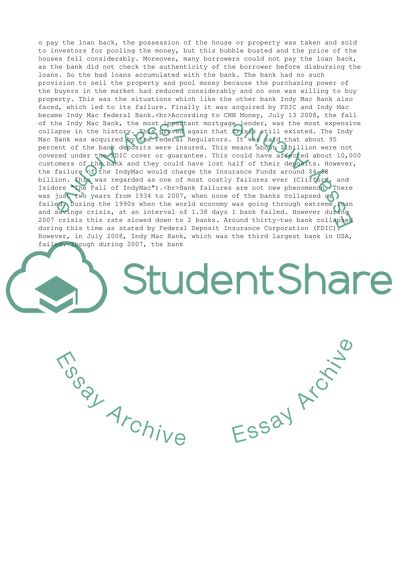Cite this document
(The housing bubble and Indy Mac bank Essay Example | Topics and Well Written Essays - 1750 words - 1, n.d.)
The housing bubble and Indy Mac bank Essay Example | Topics and Well Written Essays - 1750 words - 1. https://studentshare.org/management/1787618-the-housing-bubble-and-indy-mac-bank
The housing bubble and Indy Mac bank Essay Example | Topics and Well Written Essays - 1750 words - 1. https://studentshare.org/management/1787618-the-housing-bubble-and-indy-mac-bank
(The Housing Bubble and Indy Mac Bank Essay Example | Topics and Well Written Essays - 1750 Words - 1)
The Housing Bubble and Indy Mac Bank Essay Example | Topics and Well Written Essays - 1750 Words - 1. https://studentshare.org/management/1787618-the-housing-bubble-and-indy-mac-bank.
The Housing Bubble and Indy Mac Bank Essay Example | Topics and Well Written Essays - 1750 Words - 1. https://studentshare.org/management/1787618-the-housing-bubble-and-indy-mac-bank.
“The Housing Bubble and Indy Mac Bank Essay Example | Topics and Well Written Essays - 1750 Words - 1”. https://studentshare.org/management/1787618-the-housing-bubble-and-indy-mac-bank.


